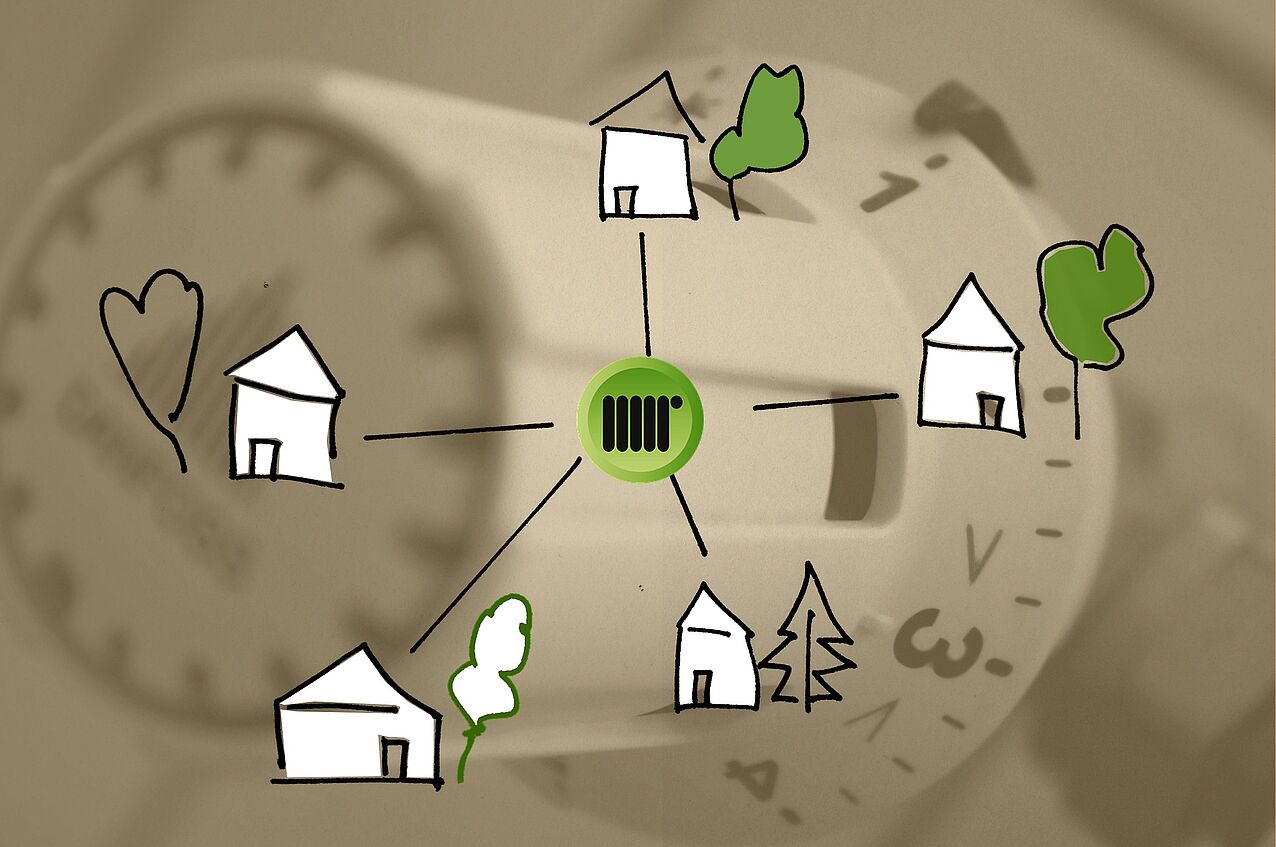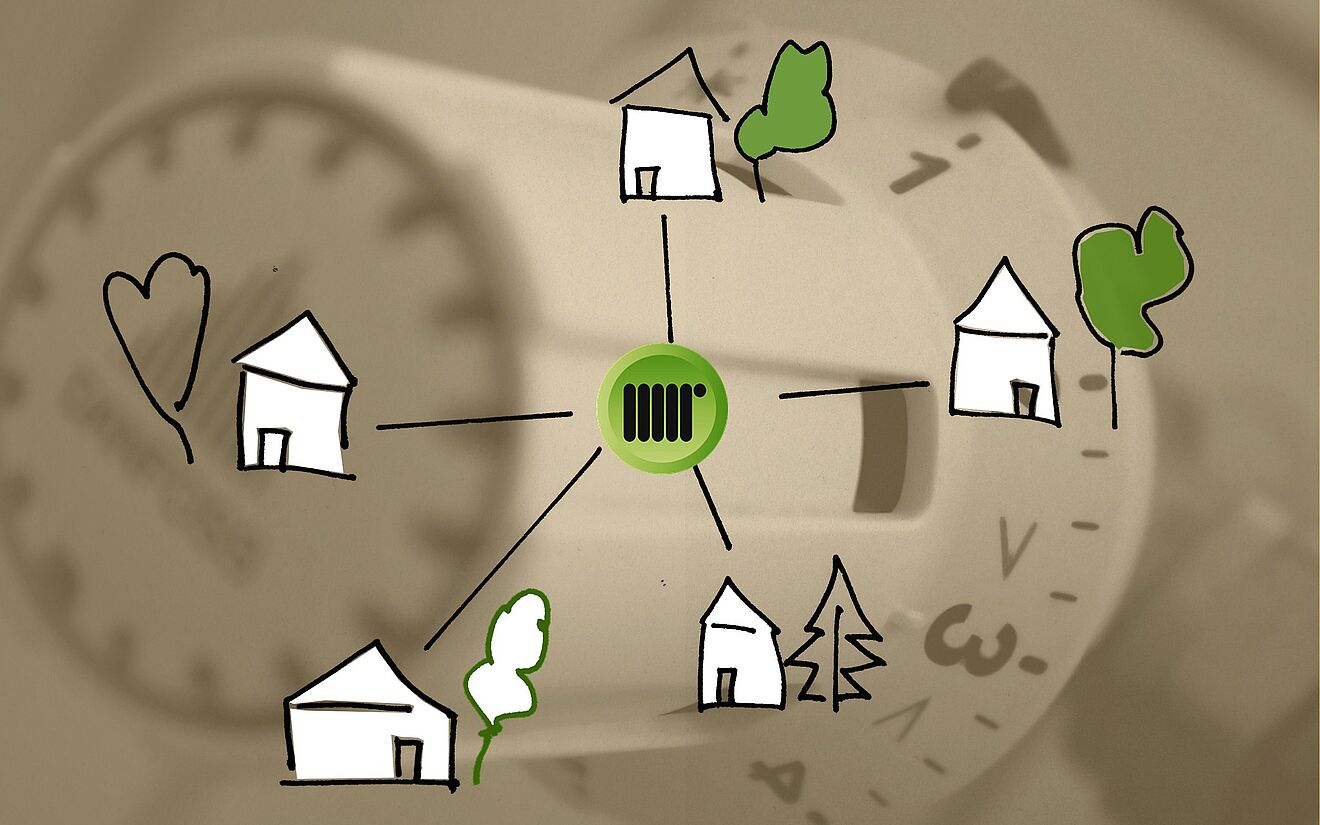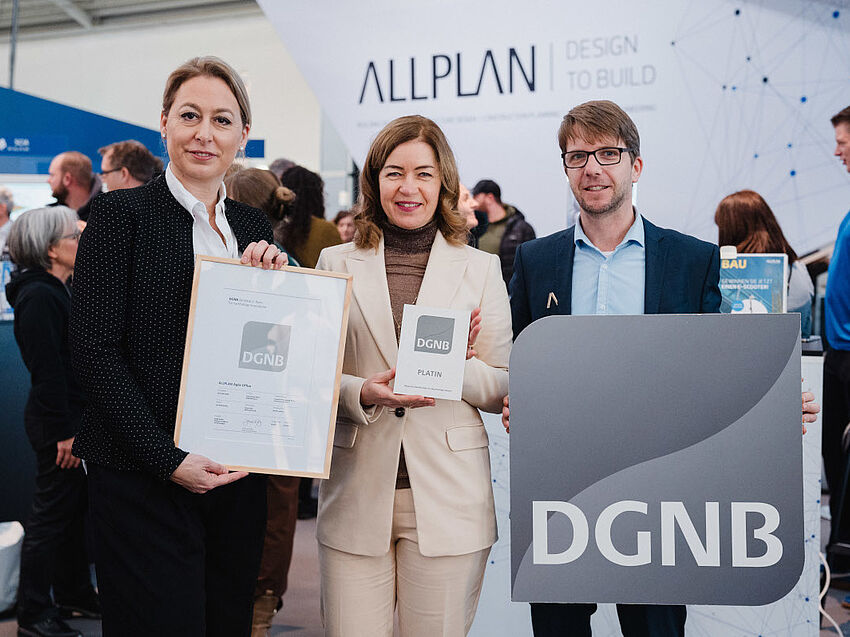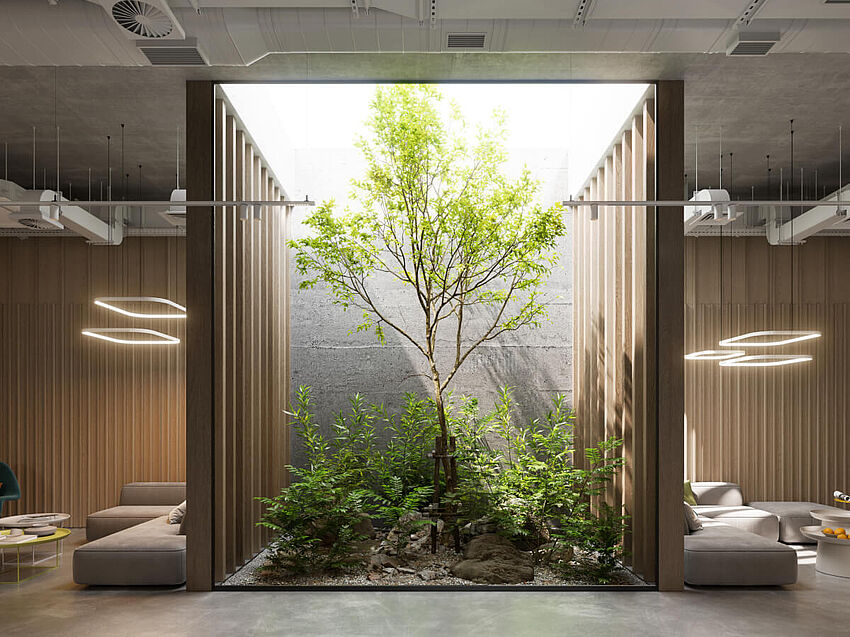New single family homes have a problem: They simply heat too efficiently. The building insulation of single family homes is now so good that they hardly consume any heating energy. An absolutely positive development on its own, but this means that a separate heating system often no longer makes economical sense for an individual house. The solution: Remember the good old virtue of sharing. That is to say, several houses jointly use one heating system. In addition to lower costs (since they are shared), such a "heating community" also has urban and social consequences.

Economical Benefits
The problem of course only concerns those heating systems that produce much more than is needed for heating and hot water. So this does not affect those who have a solar thermal energy system that is precisely tailored to their own low heating needs. However, it is expensive to buy one of these systems and you get relatively little in return. A roughly equally expensive gas boiler with a heating value use is in turn like a racing car in city traffic – powerful, but completely unnecessary. It makes sense to share here, especially since the investment costs make up a huge share of the full costs of heating operation.
Joint heating is also an option for very price-intensive environmentally-friendly heating systems, such as a wood chip heating system. This also has a very high rated power that can easily supply several houses and also costs so much so that the purchase is also really only worth it if many users are connected to it. Regardless of the heating system, however, in each case additional costs are to be included for a local heating network required for joint use.
Urban Planning Consequences
In urban houses that are wall-to-wall already, joint heating can theoretically be similarly realized like the heating system of a multi-family house, provided the buildings are planned and built together. Several free-standing houses, on the other hand, require a local heating network. Such a system is initially bound to the requirements for grid expansion, which is to be taken into consideration in the planning. In addition, there is the question of where the heating system should ultimately be located. One version is the traditional accommodation in the basement of the homes. However, a heating system placed centrally outdoors has a more balanced effect on heat loss. A boiler room can be disregarded here.
Proximity and Trust
In whose basement or on whose property the system is located of course also has social implications. One person gives up space, while the other saves it. Agreements have to be made within the "heating community" and responsibilities must be divided up. They can occur as legal or cooperative operators of the system or individuals may bear the burden themselves. These "heating chieftains," who are usually supplying their plots for the system, then bear the cost risk and obligation to maintain the system, but on the other hand have the "power" of the hot or cold shower.
The common dependency as well as the action and interaction of the interest community creates a certain proximity among neighbors that is not necessarily self-evident otherwise. A functioning heating community is also increasingly dependent on a harmonious coexistence and mutual trust. In the ideal case, joint heating will bind people together. In cases of conflict, on the other hand, things could "get pretty hot."




